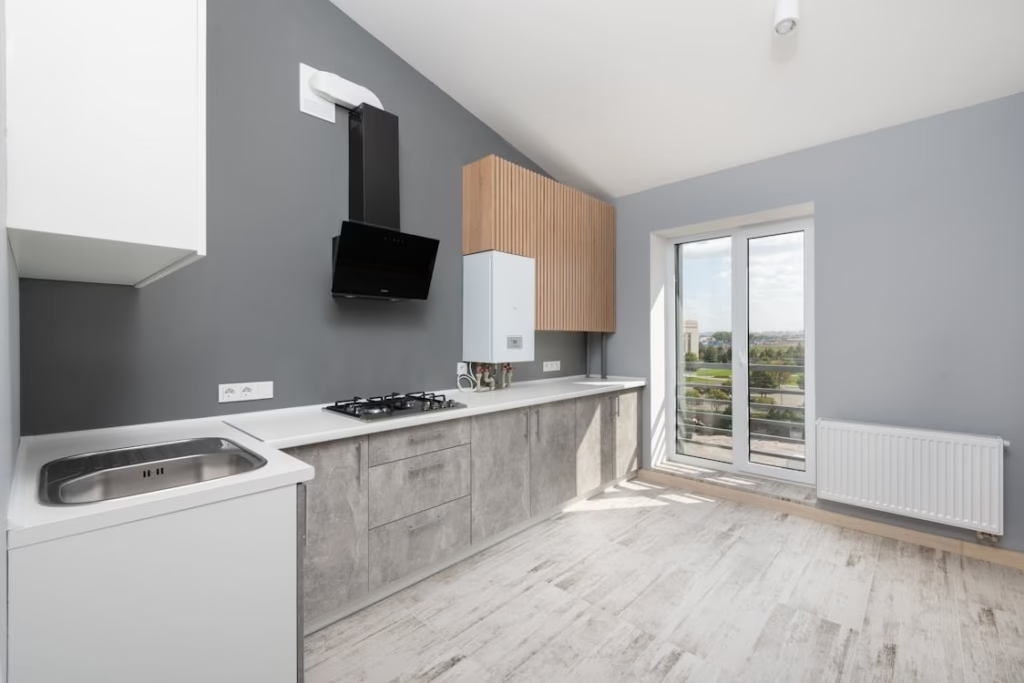Furnace trouble can sneak up quietly—unusual noises, inconsistent temperatures, or rising energy bills that don’t match the weather. When the signs start to show, many homeowners ask the same question: Is this worth repairing, or is it time to replace the furnace entirely?
The answer isn’t always straightforward. There’s no magic age or condition that dictates the right moment, but there are reliable factors that point you toward the smarter decision—whether that’s calling for a furnace repair or planning for a full upgrade.
Let’s break down the decision-making process so you can evaluate the signs, calculate the cost, and avoid investing in the wrong solution.
1. Age of Your Furnace
Age is one of the most important indicators when deciding between repair and replacement.
- Furnaces typically last 15 to 20 years with regular maintenance.
- Systems approaching the 15-year mark often require more frequent repairs.
- Older units are less efficient by design—even when functioning properly.
If your furnace is under 10 years old and this is its first major issue, a targeted furnace repair might be all you need. But if it’s past its prime and breaking down more often, replacement could offer better value in the long run.
2. Repair Frequency and History
Look at the repair history over the past 2–3 years. Are you calling for service multiple times each season? Are small parts like igniters or motors failing repeatedly?
Warning signs of declining reliability:
- More than two repairs per year
- Parts no longer under warranty
- Previous AC repair or heating issues linked to the same system
- Longer service appointments with less consistent results
Constant breakdowns are a strong sign that your furnace is entering a cycle of diminishing returns. At some point, repair costs can exceed the furnace’s remaining value.
3. Total Cost of Repairs
Cost alone isn’t the only factor—but it’s an important one. A good rule of thumb: if the repair will cost 50% or more of the price of a new system, replacement is usually the better move.
Example:
- A new furnace might cost $4,000 to $6,000 depending on your region and size.
- If your upcoming repair is $2,000 or more, that money could be better spent investing in a new, energy-efficient model.
Also consider the cumulative cost of frequent smaller repairs. Even two $500 repairs in a short period add up fast—and still leave you with an aging system.
4. Energy Efficiency and Utility Bills
Older furnaces were built to different efficiency standards. Many operate at 70–80% AFUE (Annual Fuel Utilization Efficiency), while new models reach 95% or higher.
If your utility bills are climbing despite consistent use, your furnace may be losing efficiency.
Other efficiency red flags:
- Longer run times
- Poor humidity control
- Cold spots in certain rooms
- Inconsistent temperatures between floors
Upgrading to a high-efficiency unit not only saves on monthly bills, but may also qualify for tax incentives or rebates—offering additional financial advantages.
5. Safety Concerns and Air Quality
Some issues go beyond cost—they go straight to safety. Older furnaces, especially gas models, carry an increased risk of:
- Carbon monoxide leaks
- Cracked heat exchangers
- Gas leaks
- Electrical shorts
If your furnace shows signs of soot, a yellow burner flame, or triggers your carbon monoxide detector, shut it down and call an HVAC contractor immediately.
Even if these issues can be repaired, many homeowners opt for replacement at this stage for peace of mind and improved indoor air quality.
6. Availability of Replacement Parts
As furnaces age, manufacturers eventually discontinue production of specific parts. If your technician has to hunt for used or aftermarket components—or if shipping delays stretch repair timelines—your system may be nearing obsolescence.
Lack of parts availability often results in:
- Higher repair quotes due to sourcing difficulty
- Longer downtimes (especially inconvenient in winter)
- Limited warranty options for replacement parts
If you’re hearing that parts are “getting harder to find,” that’s a strong cue that your system is nearing the end of its practical lifespan.
7. Long-Term Plans for the Home
Your decision should also take your long-term plans into account. If you’re planning to sell the home soon, a new furnace can increase property value and make your listing more attractive. Buyers often hesitate when they see older systems with recent furnace repair records.
On the flip side, if you’re staying in the home long term, upgrading now allows you to lock in modern performance and avoid emergency breakdowns later.
8. Performance and Comfort Expectations
If your current furnace:
- Takes too long to warm up
- Runs noisily or irregularly
- Requires constant thermostat adjustments
- Leaves certain rooms colder than others
… then it’s not just aging—it’s underperforming.
Newer systems are quieter, smarter (with programmable and Wi-Fi thermostats), and better at maintaining even, consistent heat. If comfort is a priority, investing in an upgrade pays off every day you use it.
Still Unsure? Ask for a Load Calculation and System Assessment
An experienced furnace repair service in Greater New Castle can evaluate your current system based on load requirements, duct efficiency, insulation, and local climate. This ensures you’re not just guessing between repair or replacement—but making an informed decision backed by data.
Wes’s Heating & Cooling recommends that homeowners regularly review their system’s age, performance, and repair trends with a trusted technician before the heating season begins. This helps avoid emergency decisions when temperatures drop.
Conclusion
Deciding between furnace repair and replacement can feel like a tough call—but the signs are usually there if you know where to look. Age, repair frequency, rising energy bills, and safety concerns all point toward whether your system still has life left—or whether it’s time to move on.
When in doubt, compare the true cost of repairs against the long-term benefits of an upgrade. In many cases, replacing a struggling system early saves you money, stress, and discomfort in the seasons ahead.
Wes’s Heating & Cooling encourages homeowners to take a proactive, informed approach to HVAC care. Your furnace doesn’t just heat your home—it protects your comfort, your safety, and your peace of mind.




